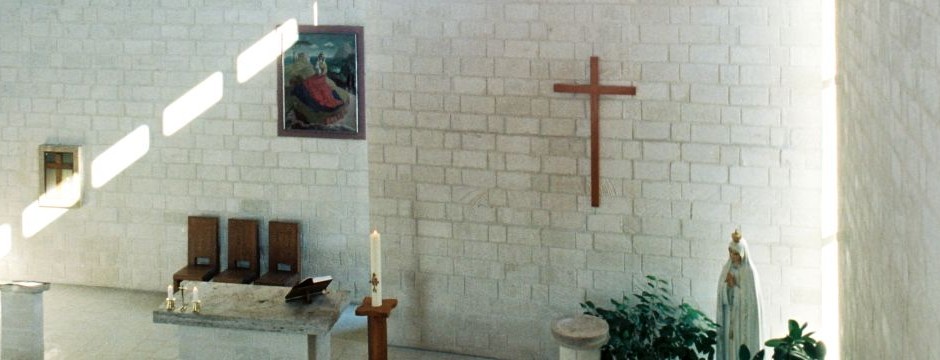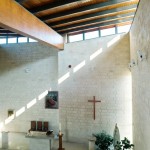Szászberek, 2003
Architecture: Gábor Gereben, Ybl Prize laureate architect, Péter Gereben
The village built a church in praise of the Virgin Mary in 1438. In 1571 Szászberek still had a church, which by the 1680s had been destroyed by the Turks. The landowners, the Váczys, moved to the neighbouring Jászalsószentgyörgy, and let the people of the village use the stones of the church, along with its two bells. It was many years later, in 1943, that the building of a new chapel was funded by two families, the Kohners and the Terlandays. It was subsequently destroyed during the Second World War.
In 1992 the congregation established a foundation for the creation of a Roman Catholic chapel.
Planned to take place in 2000, the laying of the foundation stone was important on two accounts. On the one hand, it was to commemorate the 1000th anniversary of the Christian state, and on the other, that spring the village was threatened by the greatest flood of all times. Accordingly, the concepts of man, faith and water were key to the design process.
Such architectural phrases of the chapel as the inward-sloping roof or the rain-pipe by the entrance, which leads the water, through the mouth of a fish held by an angel, into the basin of a fountain, all remind one of water. Inside, the positioning of the baptismal font, along with the superior material of its stone and the special illumination, symbolizes the vital force of consecrated baptismal water.
Pál Molnár C.’s painting of the Madonna, which was hung in the chapel before the war, was placed behind the new altar, and also receives natural illumination in a special way. The surviving bell of the village found its new place at the appropriate height.
Photography: Tibor Zsitva







